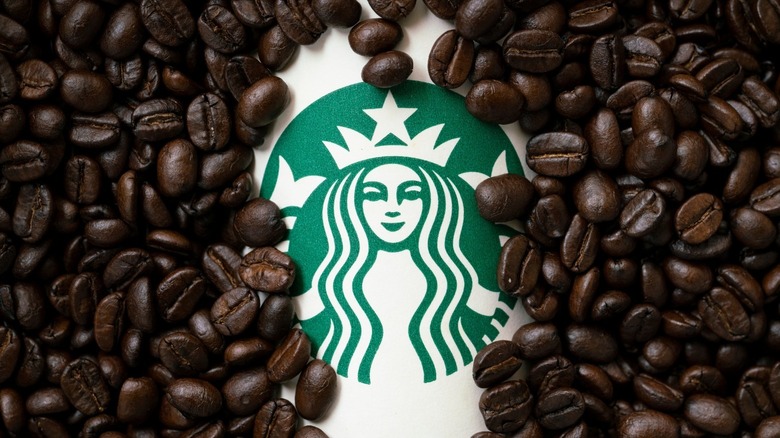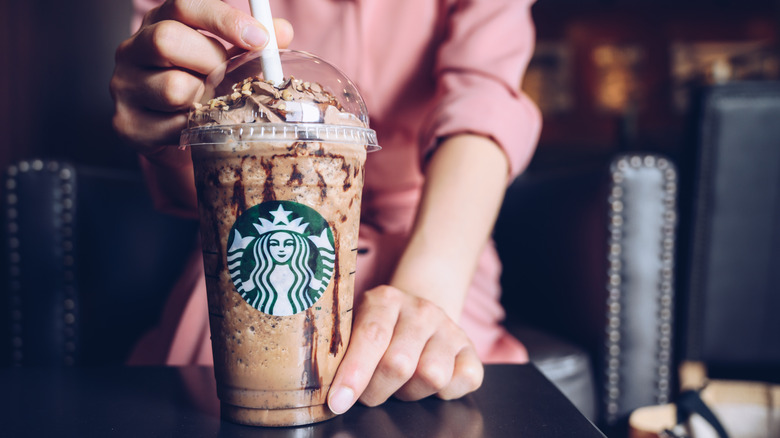The Real Reason Starbucks Can't Keep Up With High Demand
The price of Starbucks common stock rose nearly 6% on May 4. Representing a sea change from the 32.6% loss in share value for the year to date, this vote of investor confidence may derive from a speech made by Starbucks CEO Howard Schultz the day before. On May 3, the CEO held a scheduled earnings call, during which Schultz characterized the Seattle-based coffee purveyor's status as "completely half full," per Nasdaq. Schultz backed it up with what might arguably be the best bad news a business might ever have to disclose — that demand for its products and services is so high that it has become difficult to keep up without an additional and substantial investment.
Such is apparently the case with the coffee company, where the effects of the pandemic and the pressure of expanding Starbucks employee union attempts continue to affect business. Among other challenges, Starbucks has found itself without "adequate capacity to meet the growing demand for [its] coffees," as Schultz said (per Marketwatch). Now Starbucks is finding itself facing "relentless demand" and doing its best to meet it.
Demand has been driven by unforeseen changes
On May 3 during a scheduled earnings call, Starbucks CEO Howard Schultz said that Starbucks will invest an additional $200 million toward capital improvements and employee retention efforts, per QSR Magazine. Schultz explained that COVID-19 and its fallout affected such revolutionary change in what customers want from Starbucks and an increase in mobile app ordering and drive-thru pickups that no one could have anticipated or planned for. For example, certain handcrafted cold Starbucks drinks are ordered now more than ever and account for almost 80% of sales. The pressures on employees combined with the shifting needs of consumers have apparently made it difficult for the chain to optimize performance.
The new demand presents unique challenges, albeit those that may be met with various capital improvements including upgrades to drink-making equipment and technology and innovations in ordering and delivering processes. Schultz acknowledged during the call that as things currently stand, "we're not doing our best" (via Nasdaq). Starbucks' plan for meeting increased demand will also involve significant investment in enhanced training, wages, and benefits for employees, as well as incentive programs geared toward an increasing commitment to the company and its goals.

